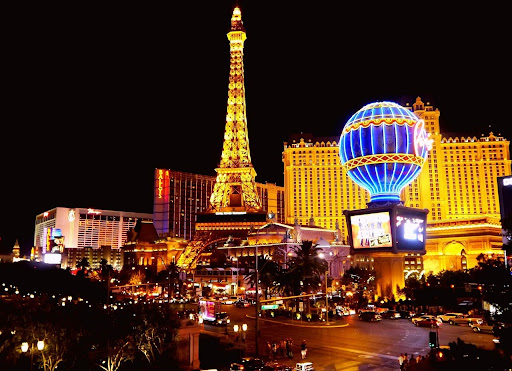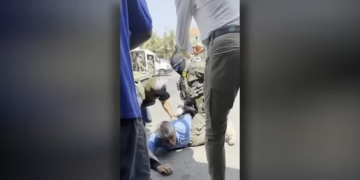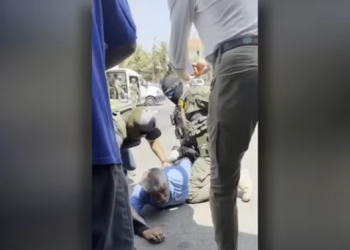SMart Column| Santa Monica’s sand and cooler air and our front-porch view of the Pacific Ocean are the prime reasons for our immense popularity as a city. We were always the escape hatch for those who live inland from our City by the Sea, and now we’ve become an escape mecca for much of the world. Tourists descend upon us like a horde of friendly locusts as they devour our Promenade, Beach, and Pier. We welcome our city’s 8.7 million visitors and hope they go home with more than a Louis Vuitton handbag and some sand in their shoes.
Those of us who inhabit this place year around believe that there is much more than expensive handbags and gritty sand that defines us. Our city’s 143-year history is about more than just the beach and the different renditions of the Santa Monica Pier through the years. The Santa Monica Conservancy and the Santa Monica History Museum do an admirable job of cataloging our city’s rich history. However, their efforts are mostly invisible to the vast majority of our tourists and our newer residents. We should change this.
When most of us travel to a new spot, we seek out the major attractions, and then we try to define the place that we are visiting. Is it special? Was it worth visiting? Are there hidden gems? As we walk through a city for the first time, we look around us and seek out the defining reasons for that city’s existence. Visiting a new city can be a teachable moment. Think of the cities we return to over and over again. They have a strong identity and unveil themselves to us step by step, providing us with richness and a sense of place. Whether it is man-made accomplishments or the natural beauty of a place, we absorb it, learn from it and want to return to learn more about its people, history, and uniqueness.
Look around you in Santa Monica. Do you feel how special this place is? Can you explore the history of Santa Monica? Do you see it unfolding before you as you walk our Pier, our downtown, our parks and our old industrial belt? If you can’t easily see our city’s historical building blocks, then others are similarly missing it. And that “it” is a crucial part of our city’s mix. Walk through our city’s parks. Can you easily discern why Douglas Park was so named? Joslyn Park? What is Memorial Park “memorializing?” Does anything in Tongva Park evoke images of the Tongva people? These details should be obvious to each visitor. Our history with “Rosie the Riveter” is practically invisible and the former industrial heart of our city is almost forgotten. People built these places and memories, and the stories of these people, whether famous or not, are being unjustly ignored. Santa Monica has been home to inventors, famous artists, musicians, writers and filmmakers, war heroes, Nobel Prize winners, astronauts, and cultural icons who have helped change the world. Their lives and accomplishments are available in books but not on our streets. Banners do not celebrate our city’s tremendous contributions to beach culture. Our beach is undervalued. Paddle board races, beach volleyball, the ubiquitous orange lifeguard tube, surfing, music and more: Tourists want to know more. To create more pride in our Santa Monica, we need to know more.
A conscientious effort to laud the accomplishments of those who came before us is needed. Actually it is required. While the Pier evolves and Downtown Santa Monica Inc. thinks about retooling the Promenade, our history must be prominent. The Santa Monica Conservancy and Santa Monica History Museum need to work in lock step with the City and the Pier to help our city’s past to flower for visitors and for coming generations. When I travel to San Luis Obispo, Santa Barbara, Atascadero, Laguna Beach, Eureka, or even Bakersfield, I am awash in signs of their history and the efforts they take to bring the past into the present. We have historians in Ocean Park, on the Pier and in every neighborhood who are eager to share both the beauty and the seedy underbelly of each of Santa Monica’s blocks. Let’s use them to rediscover our city. We want to talk about Raymond Chandler, Shirley Temple, Randy Bresnik and Jimmy Doolittle. How vital were Juan Jose Carrillo and Donald Douglas to the development of Santa Monica? What Silicon Beach pioneers has our city brought forth? The tremendous impact that our volunteer service organizations have had in our town cannot be forgotten. The Elks are celebrating 114 years in our city, and the Kiwanis Club volunteers have put in 97 years of loving service in Santa Monica.
How can we get started? Let’s examine how other cities have extolled the virtues of their special places and put an exclusive Santa Monica spin on presenting our history. A citywide effort should take place. A Museum of the Beach is one great idea. We can fill it with memorabilia for residents and tourists to see and absorb. Historical plaques and place making need to be prevalent throughout our city, and let’s make sure the kids and adults in our parks know about Donald Douglas, Marcellus Joslyn, and Mary Hotchkiss.
Giving our residents and visitors more to talk about than the Ferris Wheel, those designer handbags, and our sand is a necessary endeavor for our city. Let’s plunge into it!
Phil Brock for SMart (Santa Monica Architects for a Responsible Tomorrow)
Thane Roberts AIA, Architect, Robert H. Taylor AIA, Ron Goldman FAIA, Architect, Dan Jansenson, Architect, Building and Fire-Life Safety Commission, Samuel Tolkin Architect, Mario Fonda-Bonardi, AIA, Planning Commissioner, Phil Brock, Santa Monica Arts Commission.





















